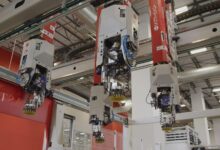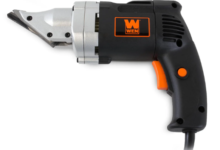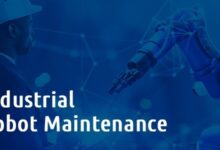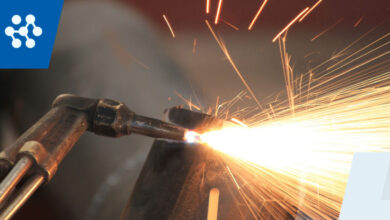The Future of Food Industry Robotics
Advertisement
Introduction
In recent years, the food industry has seen a significant shift towards automation with the introduction of robotics. This innovative technology has revolutionized the way food is processed, packaged, and distributed. Robots are now capable of performing tasks that were once considered too complex or dangerous for humans. This article will explore the impact of robotics in the food industry and analyze its strengths and weaknesses.
As the demand for food continues to rise, the need for efficient production methods has become more pressing. Food industry robotics offer a solution to this challenge by streamlining processes and increasing productivity. By automating repetitive tasks, robots can help reduce human error and improve overall efficiency.
One of the key strengths of food industry robotics is their ability to work in environments that may be hazardous to humans. For example, robots can handle hot, cold, or contaminated foods without risk of injury. This makes them ideal for tasks such as food sorting, packaging, and quality control.
Additionally, robots in the food industry can work around the clock, increasing overall production capacity and reducing downtime. This means that manufacturers can meet deadlines more effectively and respond to fluctuations in demand with greater flexibility.
On the other hand, there are some weaknesses associated with food industry robotics. One of the main challenges is the high initial cost of implementing robotic systems. While the long-term savings in labor and efficiency may outweigh this cost, many companies are hesitant to invest in such technology.
Another weakness is the potential for job displacement as robots take over tasks previously performed by humans. While this can lead to increased productivity, it also raises concerns about unemployment in the food industry. Companies must carefully consider the impact of automation on their workforce.
Strengths of Food Industry Robotics
Efficiency: Robots in the food industry can perform tasks at a faster pace and with greater accuracy than human workers. This leads to increased productivity and reduced waste.
Safety: Robots can handle hazardous materials and operate in challenging environments without risk to human health. This ensures the safety of workers and the quality of the products being processed.
Consistency: Robots are programmed to perform tasks in a consistent manner, leading to uniformity in product quality. This is crucial in industries such as food production where consistency is key.
Flexibility: Robotic systems can be easily reprogrammed to adapt to changing production needs. This allows manufacturers to respond quickly to market demands and make adjustments as needed.
Hygiene: Robots can be designed with materials that are easy to clean and sanitize, ensuring compliance with food safety regulations. This reduces the risk of contamination and ensures the integrity of the products.
Reduced labor costs: While the initial investment in robotics may be high, the long-term savings in labor costs can be substantial. Robots can work continuously without breaks or the need for additional compensation.
Data collection: Robots can be equipped with sensors and cameras to collect data on production processes in real time. This data can be used to optimize operations and improve overall efficiency.
Weaknesses of Food Industry Robotics
Initial cost: Implementing robotic systems in the food industry requires a significant initial investment in hardware, software, and training. This can be a barrier for many companies, especially smaller ones.
Technical challenges: Robotics technology is constantly evolving, leading to the need for ongoing maintenance and upgrades. Companies must keep up with these advancements to ensure the effectiveness of their systems.
Job displacement: The automation of tasks previously done by humans can lead to job loss in the food industry. Companies must consider the social impact of these changes and find ways to support displaced workers.
Complexity: Integrating robotics into existing production processes can be complex and time-consuming. Companies must carefully plan and execute the implementation of these systems to minimize disruptions.
Reliability: While robots are capable of performing tasks with precision, they are also prone to malfunctions and breakdowns. Companies must have contingency plans in place to address potential disruptions in production.
Regulatory compliance: Robotic systems must meet stringent regulatory requirements related to food safety and quality. Companies must ensure that their systems are in compliance with these standards to avoid costly fines and penalties.
Training and expertise: Operating and maintaining robotic systems requires specialized training and expertise. Companies must invest in training programs for their employees to ensure the successful implementation of robotics.
Food Industry Robotics Information Table
| Aspect | Description |
|---|---|
| Efficiency | Robots can perform tasks faster and with greater accuracy than humans. |
| Safety | Robots can handle hazardous materials without risk to human health. |
| Consistency | Robots perform tasks in a consistent manner, ensuring uniform product quality. |
| Flexibility | Robotic systems can be easily reprogrammed to adapt to changing production needs. |
| Hygiene | Robots can be designed with materials that are easy to clean and sanitize. |
| Labor costs | Robots can work continuously without breaks, reducing labor costs in the long run. |
| Data collection | Robots can collect real-time data on production processes for optimization. |
Frequently Asked Questions
What is food industry robotics?
Food industry robotics refers to the use of automated systems to perform tasks in food processing, packaging, and distribution.
How can food industry robotics benefit companies?
Robotics in the food industry can improve efficiency, increase productivity, ensure product quality, and enhance workplace safety.
Are there any risks associated with food industry robotics?
While there are many advantages to using robotics in the food industry, there are also risks such as high initial costs, job displacement, and technical challenges.
What types of tasks can robots perform in the food industry?
Robots can handle tasks such as sorting, packaging, labeling, quality control, and even cooking in the food industry.
How can companies address the challenges of implementing food industry robotics?
Companies can address challenges by investing in training, staying up-to-date on technology, considering the social impact, and having contingency plans in place.
What are some examples of successful implementations of food industry robotics?
Companies such as Amazon, Nestle, and PepsiCo have successfully implemented robotics in their food processing and distribution operations.
What does the future hold for food industry robotics?
The future of food industry robotics looks promising with advancements in technology, increased adoption by companies, and continued improvements in efficiency and reliability.
Conclusion
In conclusion, food industry robotics have the potential to revolutionize the way food is processed and distributed. While there are strengths and weaknesses associated with this technology, the overall benefits are clear. Companies that embrace robotics in the food industry can improve efficiency, productivity, and safety while remaining competitive in the market. It is essential for companies to carefully evaluate the implications of implementing robotics and develop strategies to address any challenges that may arise. By leveraging the power of robotics, the food industry can continue to innovate and meet the demands of a rapidly changing market.
Are you ready to take your food industry operations to the next level with robotics? Contact us today to learn more about how robotics can benefit your business and drive success in the competitive food industry landscape.
Disclaimer
The information provided in this article is for educational purposes only and should not be taken as professional advice. Readers are encouraged to conduct their own research and consult with experts before making any decisions related to implementing robotics in the food industry.








